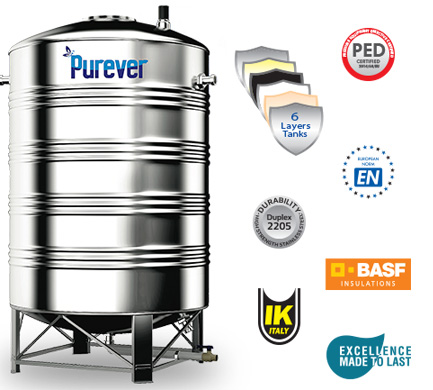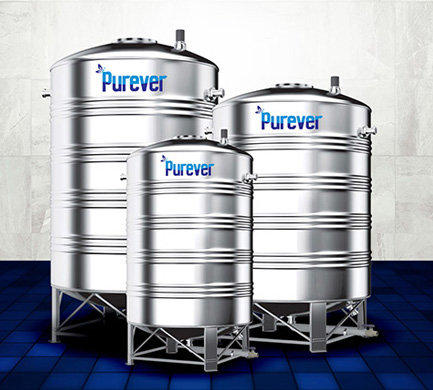Water Tanks
Steel Water Tanks

A water tank is a container for storing water. They are used to provide storage of water for use in many applications, drinking water, irrigation agriculture, fire suppression, agricultural farming, both for plants and livestock, chemical manufacturing, food preparation as well as many other uses.
There are many different types of water tanks, each with its own advantages and disadvantages. Some of the most common types of water tanks include:
- Overhead water tanks: These tanks are typically made of steel or concrete and are mounted on top of buildings. They are a good option for areas with high water pressure, as they can provide a large amount of water storage. However, they can be expensive to install and maintain.
- Underground water tanks: These tanks are typically made of plastic or concrete and are buried underground. They are a good option for areas with low water pressure, as they can provide a large amount of water storage without the need for a pump. However, they can be more difficult to install and maintain than overhead water tanks.
- Plastic water tanks: These tanks are typically made of high-density polyethylene (HDPE) or polyvinyl chloride (PVC). They are a good option for areas with low water pressure, as they can be lightweight and easy to install. However, they are not as durable as other types of water tanks.
- Fiberglass water tanks: These tanks are typically made of fiberglass reinforced plastic (FRP). They are a good option for areas with high water pressure, as they are strong and durable. However, they can be more expensive than other types of water tanks.



Here are some of the benefits of using water tanks:
- Water tanks can provide a reliable source of water, even during times of drought or water shortages.
- Water tanks can help to reduce water waste, as they can store water that would otherwise be lost through evaporation or leaks.
- Water tanks can help to improve water quality, as they can filter out impurities and contaminants.
- Water tanks can help to reduce the cost of water, as they can store water that can be used later when water prices are higher.
Here are some of the drawbacks of using water tanks:
- Water tanks can be expensive to purchase and install.
- Water tanks can require regular maintenance to prevent leaks and corrosion.
- Water tanks can take up a lot of space.
- Water tanks can be a potential hazard if they are not properly installed and maintained.
